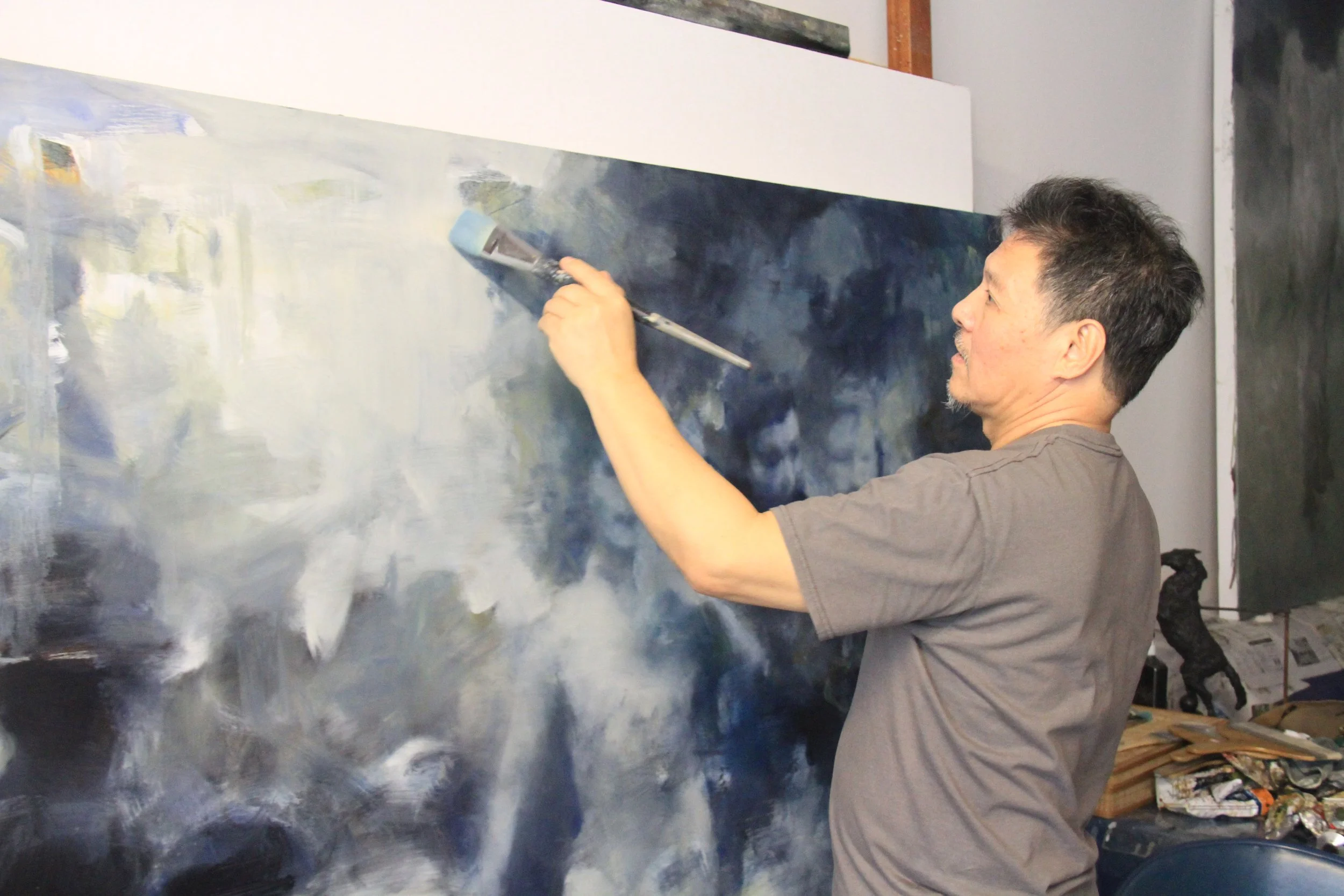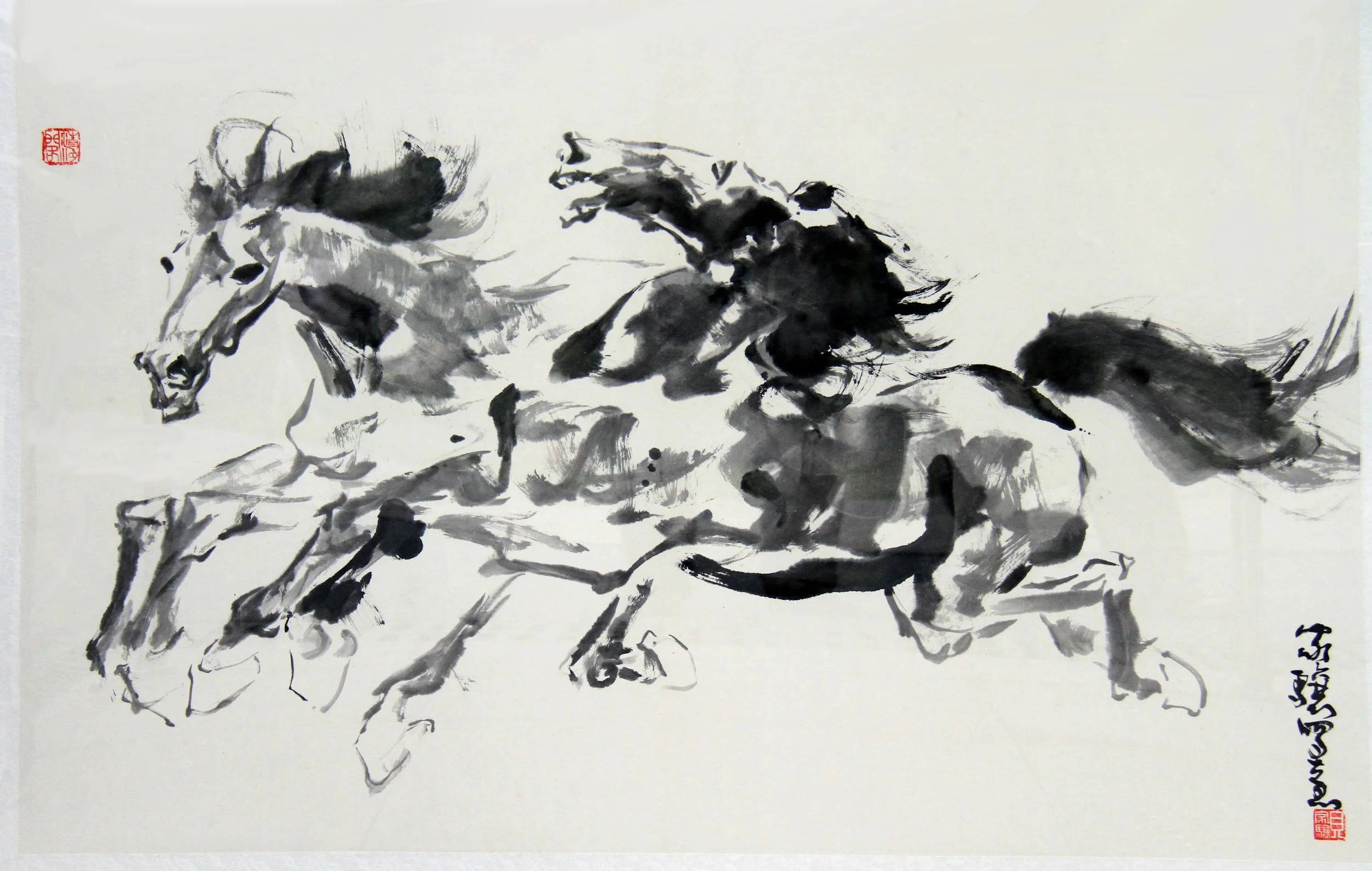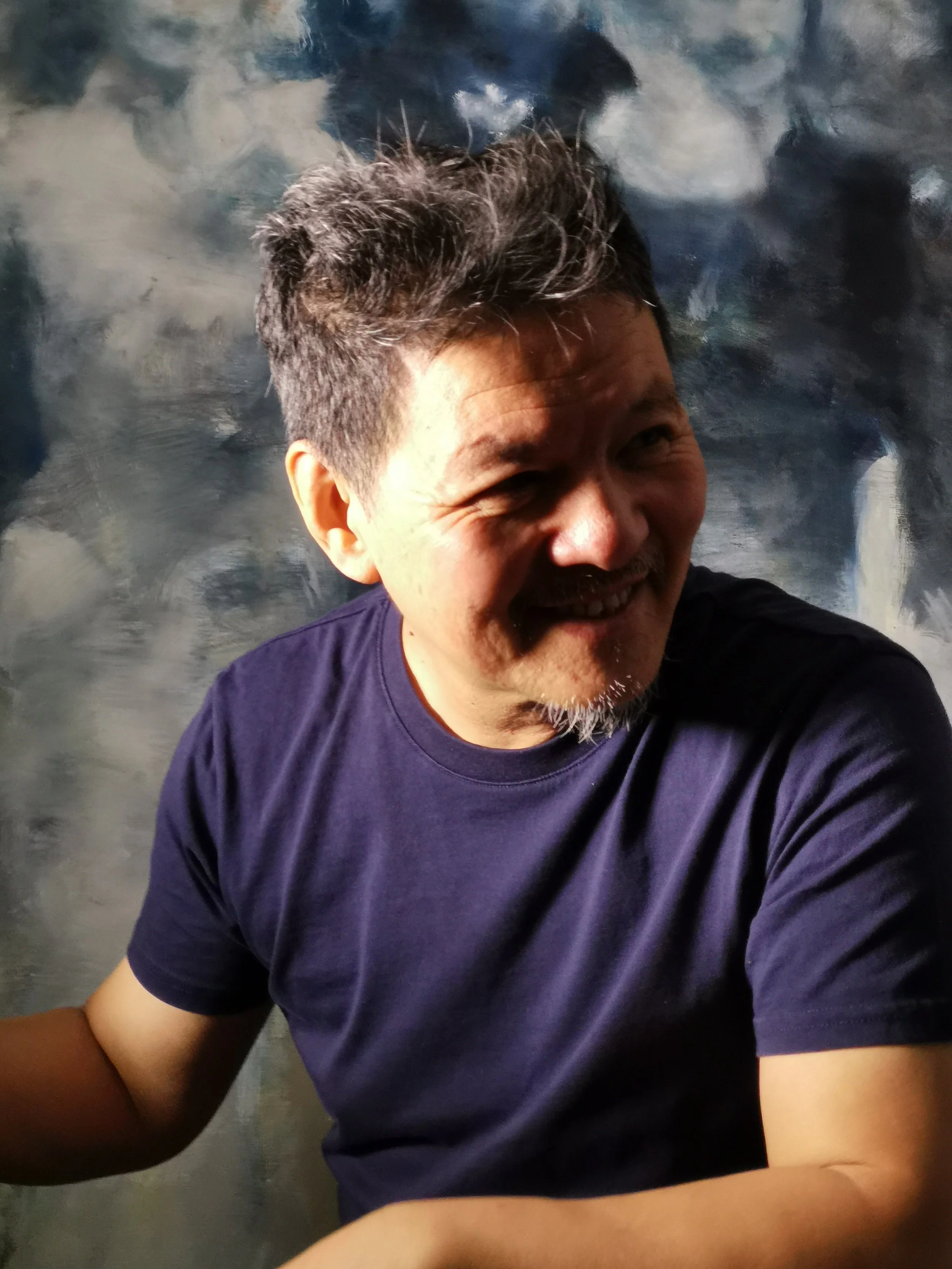Transformation III
The statement of “Artistic Will is established based on a certain mental state of a period” perhaps best summarizes BEI Jiaxiang’s artistic transformation.
When Bei is working on his work…
When it comes to Chinese painting, BEI does not hide his childhood innocence. Following his family tradition, he began learning calligraphy at the age of three and started ink wash painting at five. The horses he doodled on the table at seven were so deftly rendered that his father couldn't bring himself to wipe them away. However, as time went on, BEI became deeply captivated by the vibrant colors of Western oil painting and gradually set aside the brush of traditional Chinese art. In his journey with oil painting, he found a relatively smooth path, as his inherent artistic talent, combined with professional training at an art academy, quickly elevated him to the pinnacle of the national art world.
However, until his middle age, BEI had not been able to establish a satisfying language of painting, and this silent sense of frustration led him to a pessimistic belief that he could no longer create. Henry Zellner once suggested that ancient art can lead us into a special temporal space that allows us to “become aware of something within ourselves that has a distant connection to it.” Thus, during a long period away from paint and canvas, BEI picked up the long-lost brush, attempting to return to the carefree spirit of his childhood and reevaluate the essence of his artistic practice. Otto Pacht’s interpretation of Artistic Will mentions that “genius does not detach itself from the traditions of its own people; they are part of that tradition.” Indeed, it was this unconscious return to ink painting that made Bei Jiaxiang feel alive again, filled with unprecedented energy.
Ink on Paper
103×68 cm
2014
When he embarked on his artistic journey once more, “The last straw for me is the Eastern things,” stated BEI.
In Chinese art theory, The Six Principles of Chinese Painting by Xie He outlines the creation and evaluation of ink painting across six aspects. Among these, the principles of Correspondence to the Object, Suitability to Type, Division and Planning, and Transmission by Copying show a fundamental commonality between Eastern and Western artistic theories today. However, Spirit Resonance and Bone Method are not only important symbols of the shared origins of calligraphy and painting in Chinese culture but also represent the spiritual core of Chinese aesthetics. Such realms are something that a Chinese painter may spend a lifetime striving for without fully reaching.
Caballero - Horse Series
Oil on Canvas
76*61 cm
2014
In BEI’s previous painting style, his brushwork already exhibits a strong sense of the Bone Method. Whether it’s the reins on the horses’ faces in the Knight series, the elaborate adornments in the Chinese Opera series, or the costume patterns in the Shanghai Dialect series, he has matured in the use of the unique “rubbing” technique found in ink painting. He often applies thick paint, akin to the “thirsty brush” in calligraphy, utilising the texture of the brush itself to depict details with just a few strokes.
Blushing Rosey - Chinese Opera Series
Oil on Canvas
165*172 cm
2018
BEI gradually realised that refining painting skills requires “flipping through tradition and breaking through in a manageable and substantiated way.” Thus, the new style nourished by this understanding is especially impressive. In the new Horse series, he depicts horse legs like bamboo joints, with each stroke vigorous and precise, resembling a powerful breakthrough. In the Nude series, he employs the texture of “wrinkled” strokes to give the fleshy bodies appropriate contours. In the New Era of Hometown series, he further integrates the “dyeing brush” technique, using delicate oil paint to evoke the rippling movement of wet ink.
From his initial personal wills to the fusion of brush techniques and mastery of color, BEI’s artistic language has finally revealed its spontaneous growth path. This explains why his work often seems to wander among various Western oil painting schools yet still maintaining a distant connection—they are not rooted in oil painting at all. The pursuit of blurred realities after transcription, the relaxation following lifelike representation, and the abstraction that abandons perspective and light are merely BEI’s explorations of the subtlety inherent in Chinese painting, where the essence lies in the balance between resemblance and non-resemblance. In the ebb and flow of his contemplation, the fleeting artistic conception flows across the canvas, embodying the true Spirit Resonance.
Since resuming oil painting in middle age, BEI has been keenly “engaging with foreign art movements and striving to assimilate their experiences” in order to continually seek elements of traditional Chinese art through Western painting. This approach marks BEI’s artistic transformation.
When being asked if he would consider catering to contemporary trends, BEI Jiaxiang shyly smiles and replies, “No, painting should lead the way.”








